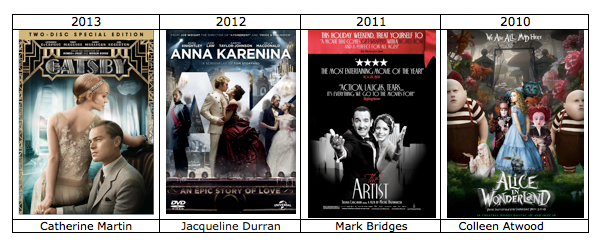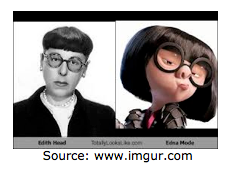Costume Design: Part of the Language of Film

Did you see what she was wearing?
If anything is important to middle schoolers today, it is their appearance. The clothes they choose to wear communicate their fashion sense (or perhaps the lack thereof) as well as their identity. And the media is certainly one of the major influences on what they decide to purchase and wear.
Do you think your students ever notice what the actors wear in the movies? I certainly didn’t, until recently.
While I’ve been teaching the language of film for a while, I’ve not really spent much time on costume design and how important that is in a movie. But what an actor wears is as important, if not more so, than the camerawork, lighting, sound and editing.
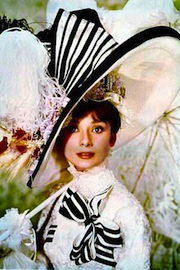
My Fair Lady
The new Common Core standards for English Language Arts remind students to consider both the techniques used in filmmaking as well as the choices made by directors and actors.
Costumes certainly fall within these areas. Drama and theatre teachers, as well as their students, must certainly study costumes. As Oscar winning director/producer Martin Scorcese says, in many movies “costume is character.”
Costume designers for motion pictures say it is the clothes that help not only tell the story, but also communicate the setting and bring a character to life. What would Dorothy be without her red slippers; Indiana Jones without his fedora and whip; Audrey Hepburn without that hat?
A growing awareness of costume design
For most of motion picture history, the people responsible for how actors look on camera were among the unsung heroes of filmmaking. But in recent years, that’s changed.
A new exhibit, Hollywood Costume, is set to open in early October in Los Angeles. And one of its goals is to give film fans a chance to get up-close-and-personal with some clothes worn by famous characters in film, as well as learn more about costume design decisions.
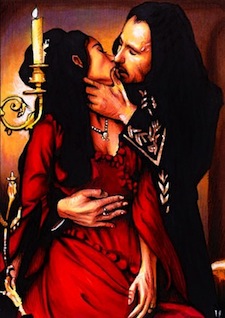
Bram Stoker’s Dracula
Iconic fantasy, sci-fi, and superhero costumes will also be on view, from films including Harry Potter and the Half-Blood Prince (Jany Temime, 2009), The Twilight Saga: New Moon (Tish Monaghan, 2009), Terminator 3: Rise of the Machines (April Ferry, 2003) and Bram Stoker’s Dracula (Eiko Ishioka, 1992). (Learn more about the exhibit in this detailed Oscars press release.)
And behind those clothes are costume designers, who have their very own category in the Academy Awards.
If you’re a fan of the movie awards, you may (or may not) recall the following films which took home the OSCAR for best costume in the past several years. (Under each image, I’ve added the names of the award-winning costume designers.)
One teaching suggestion here would be for your students to conduct research into one of the designers listed below, or the designer behind one of their favorite films. (The Internet Movie Database is a great resource for locating film credits. And you’ll find a complete list of Oscar winners for costume design at this Wikipedia entry.)
Undoubtedly, Hollywood’s most well-known costume designer was Edith Head. She has been honored with eight Academy Awards (a record), starting with The Heiress (1949) and ending with The Sting (1974). And she was the subject of a parody. Animators for the 2004 Pixar movie The Incredibles paid homage to her by creating the character Edna Mode.
If you’re looking for a concise biography of Edith Head and her work in Hollywood, take a look at the video posted here. The book Edith Head: The 50 Year Career of Hollywood’s Greatest Costume Designer might also be worth adding to your school library’s collection.
Costume Resources & Teaching Suggestions
Websites like Clothes on Film and Entertainment Weekly Magazine‘s column Wardrobe Notes can be valuable teaching resources for helping students to appreciate the process and people behind dressing actors for film roles.
So how can teachers help their students better appreciate and recognize costume design when using film in the classroom? The following questions could be used as a starting guide:
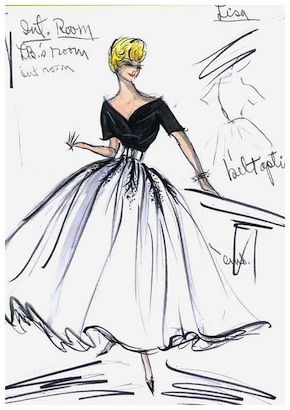
Edith Head design for Grace Kelly (Rear Window)
1. What’s your favorite film and what do you recall about the characters’ costumes?
2. Why do you think we seldom notice costumes when viewing films?
3. How do costumes reflect the time period the film was made?
4. Are there times when the costume overshadows the actor wearing it?
5. What makes a costume memorable?
The next time you watch a movie, in the theatre, at home, or on some other device, take time to notice what the actors are wearing.
It’s not hard to see that helping students build awareness of what an actor or character wears in a movie is part of those “critical viewing skills” we want students to have and appreciate.
Download a PDF of this article
Frank W. Baker is a media literacy education consultant and the author of three books, including Media Literacy In the K-12 Classroom (ISTE, 2012). He contributed two chapters to Mastering Media Literacy (Solution Tree, 2014). In November 2013, Frank was a co-recipient of the National Telemedia Council‘s annual Jessie McCanse Award given for individual contributions to the field of media literacy over at least 10 years. Follow him on Twitter @fbaker.

